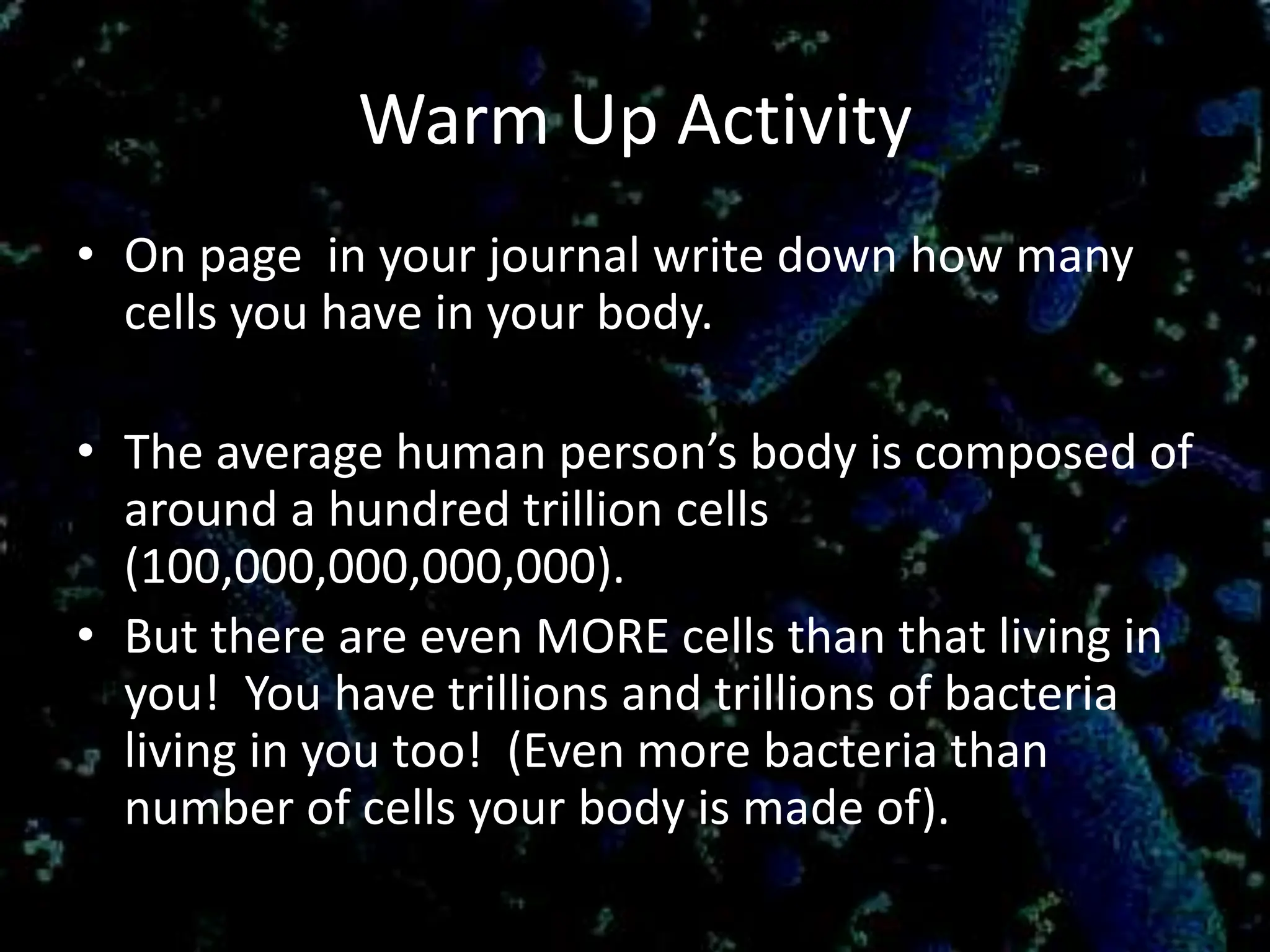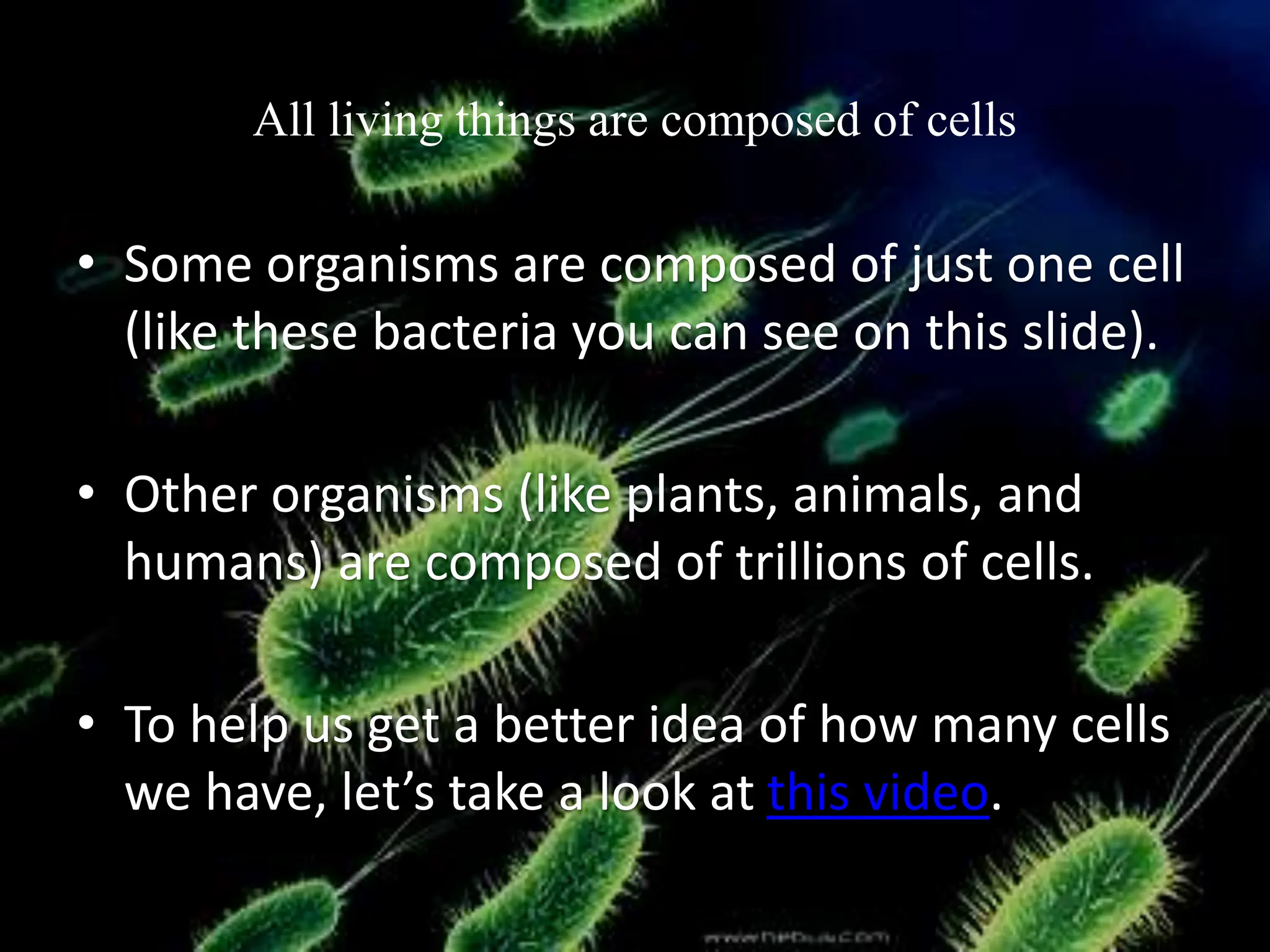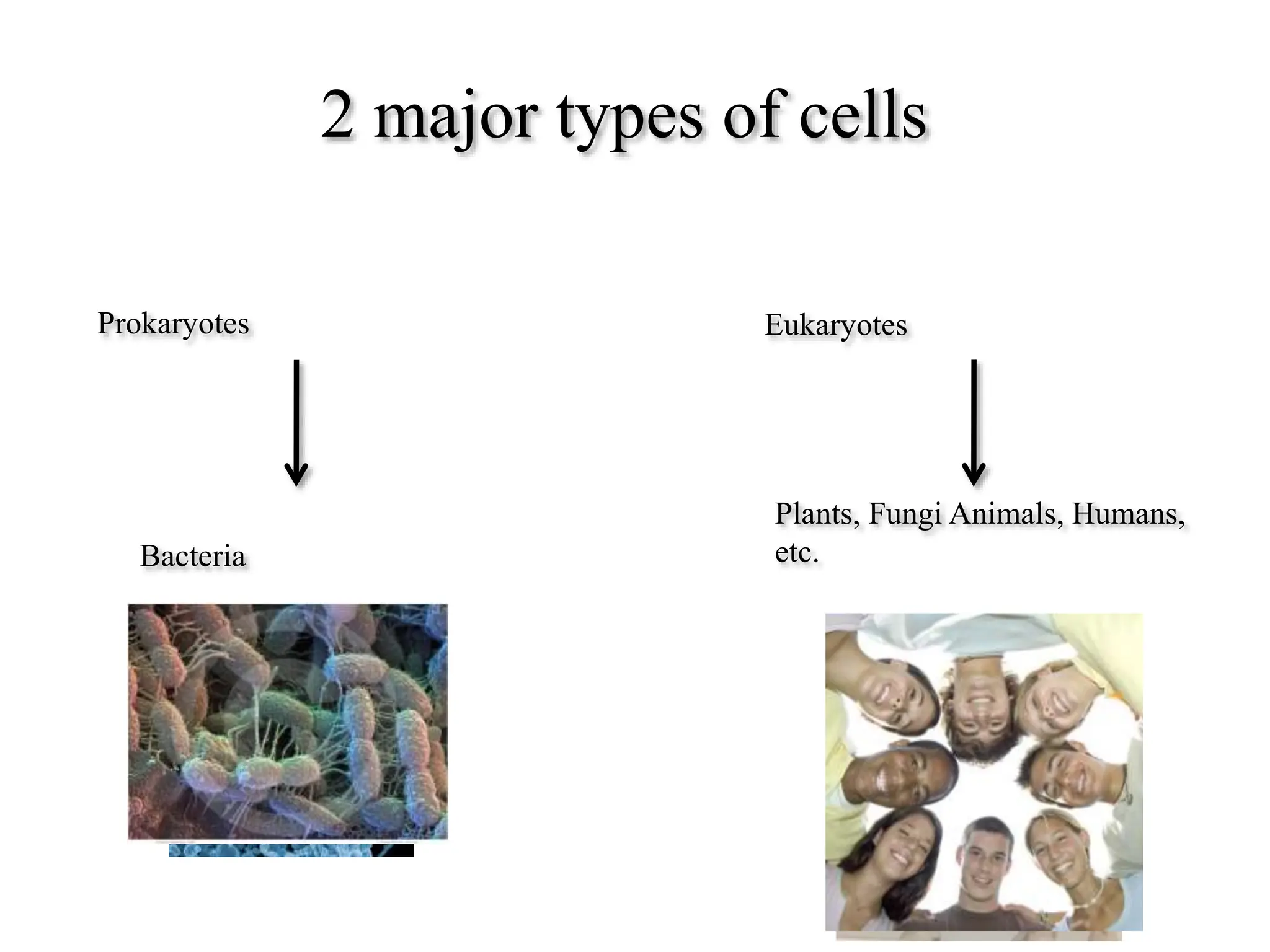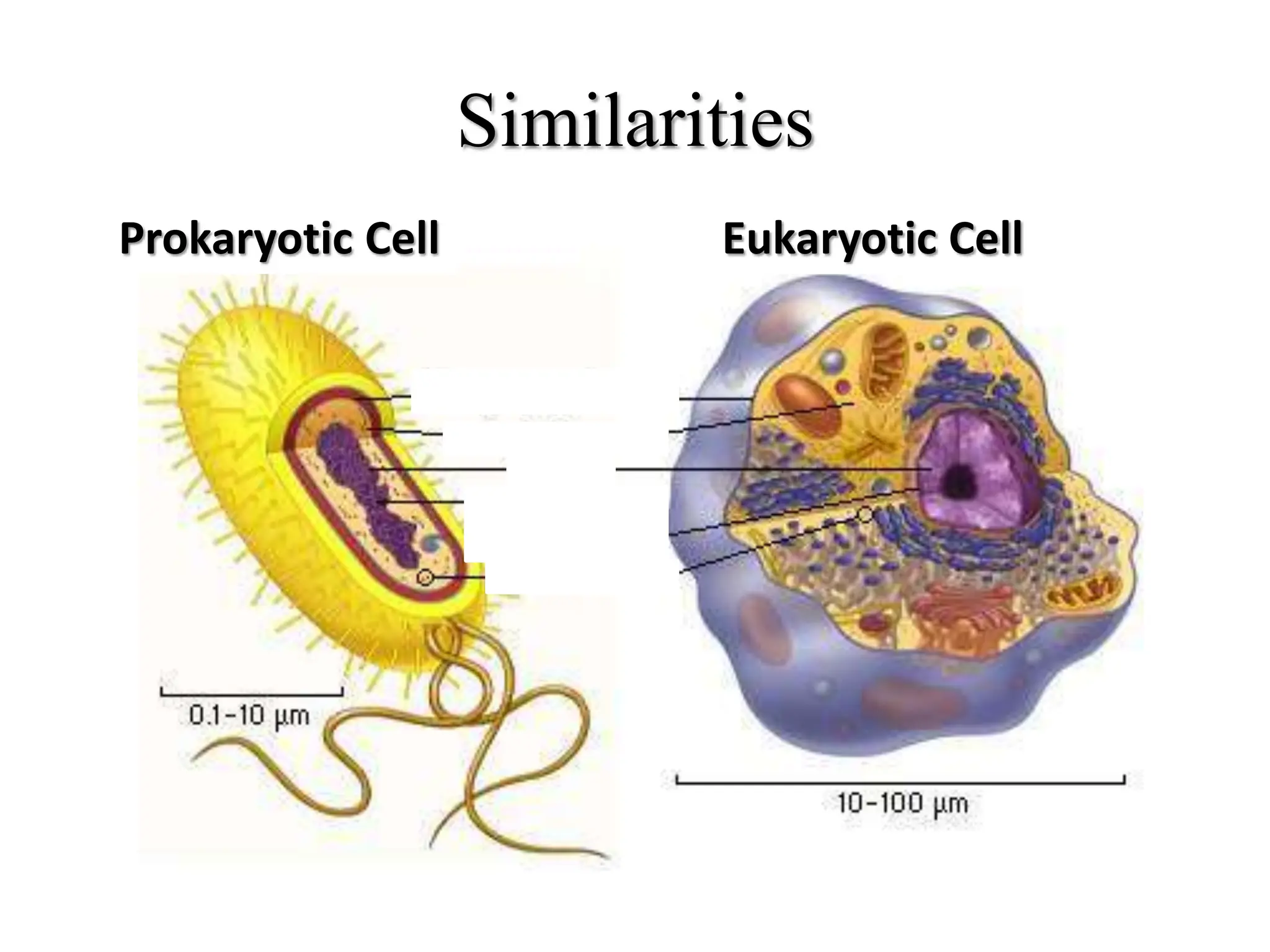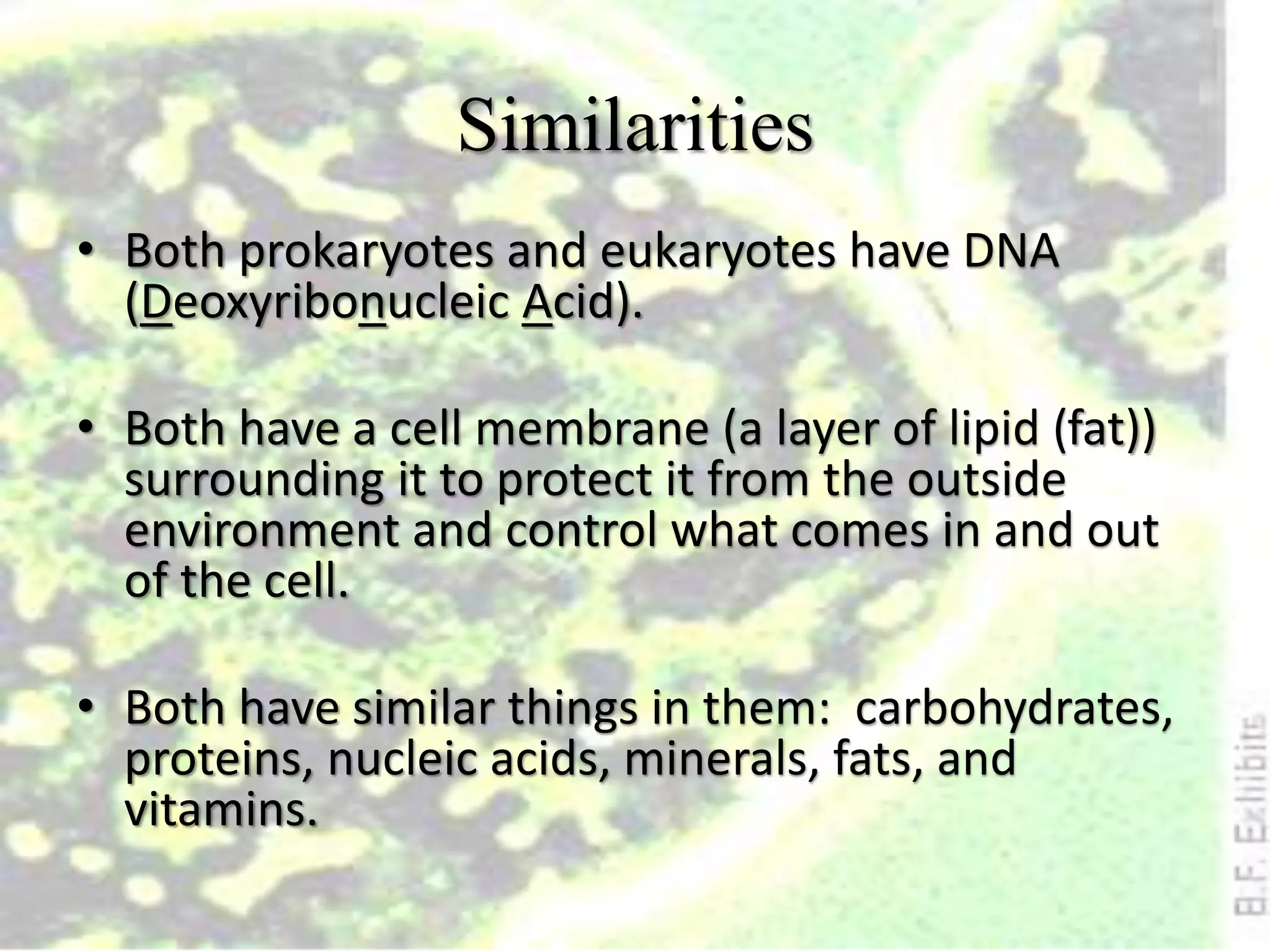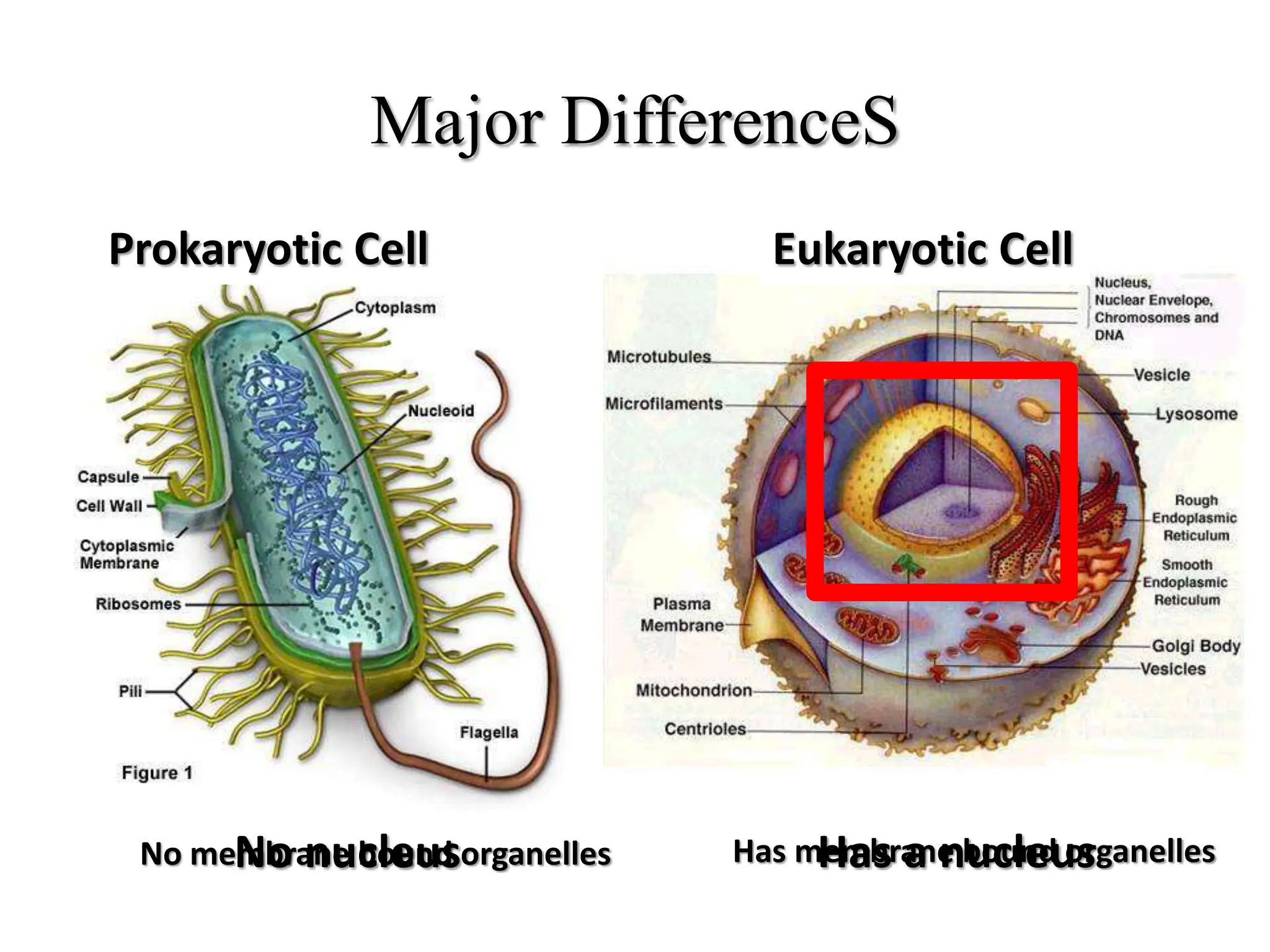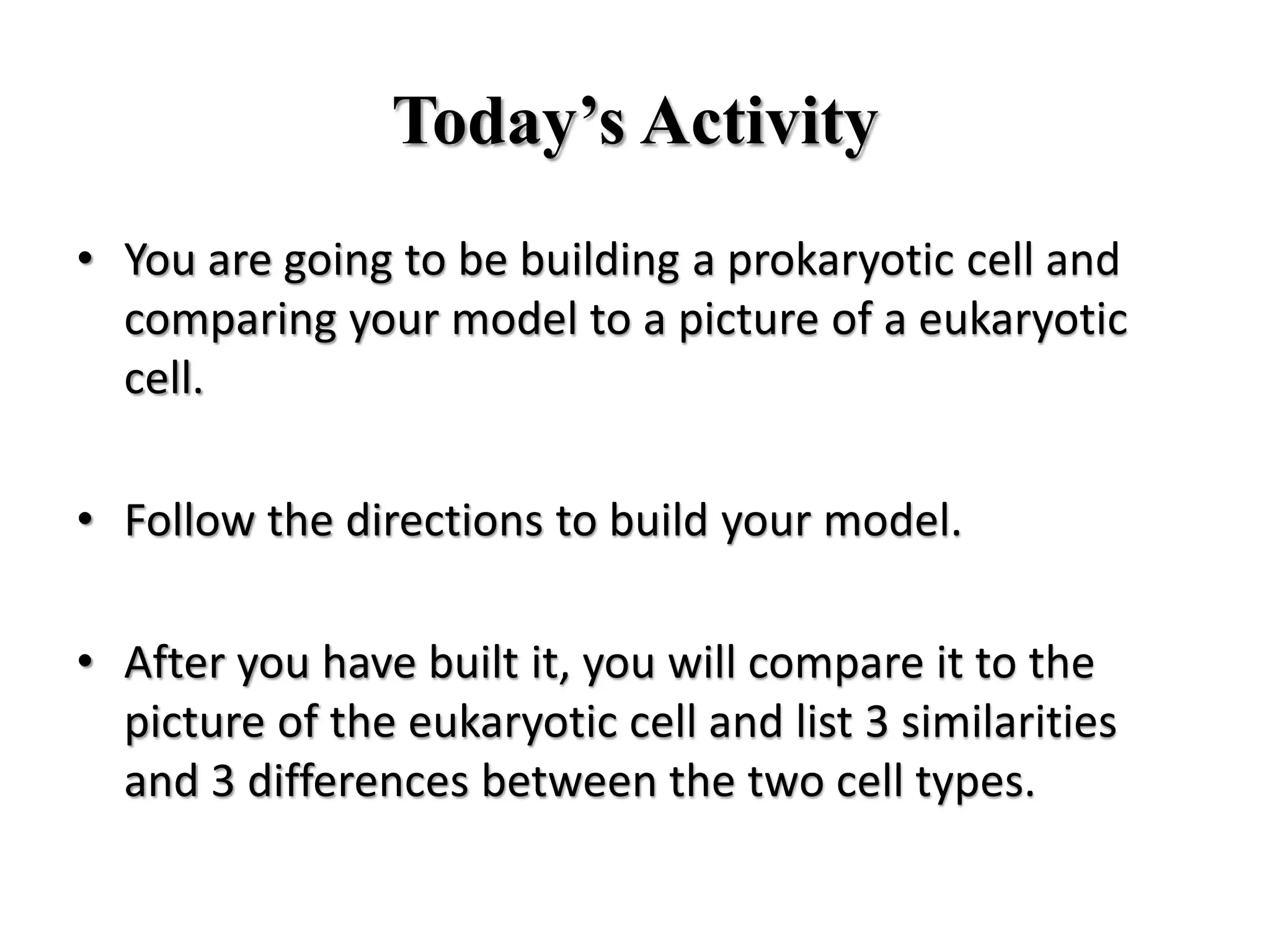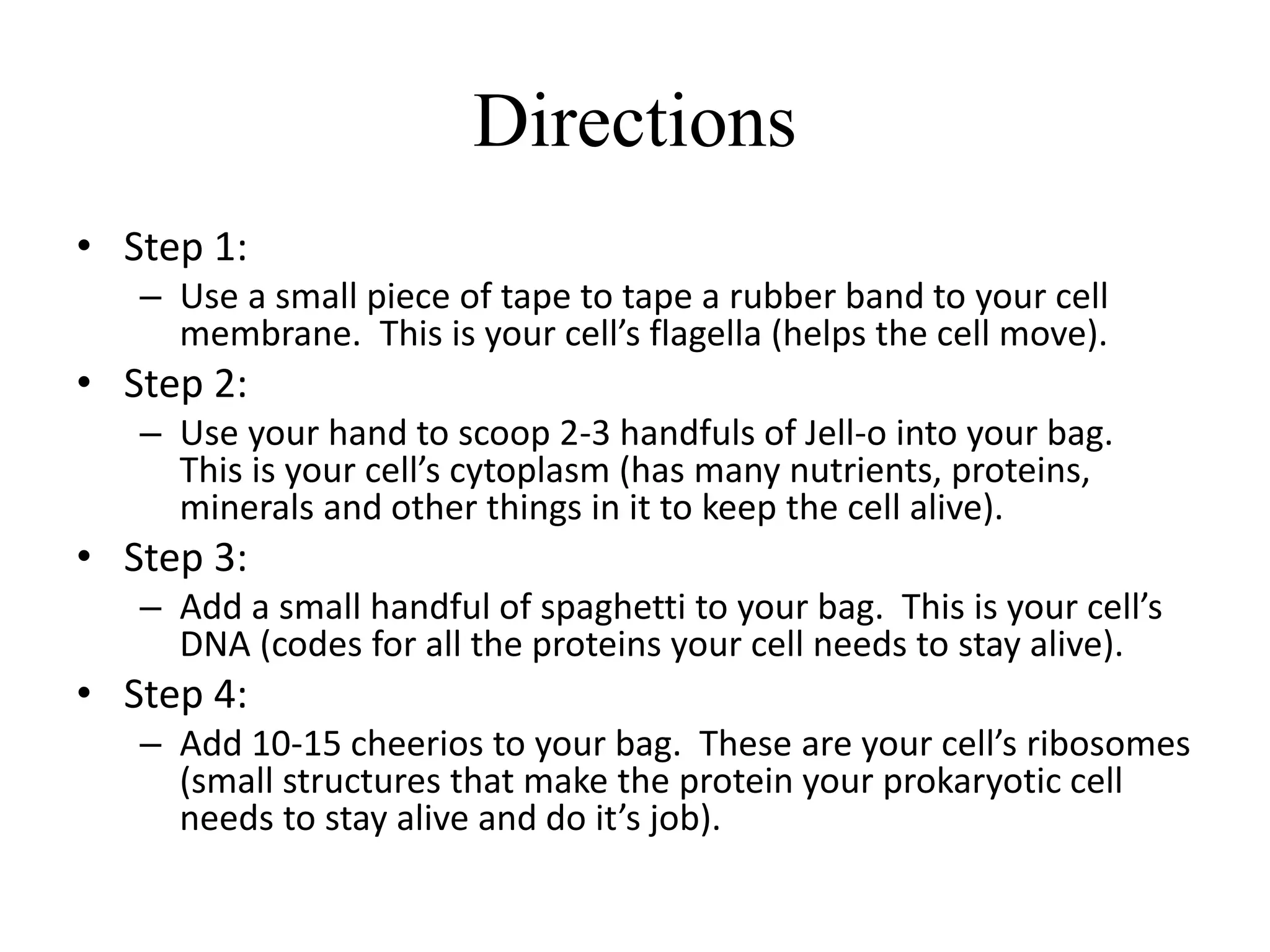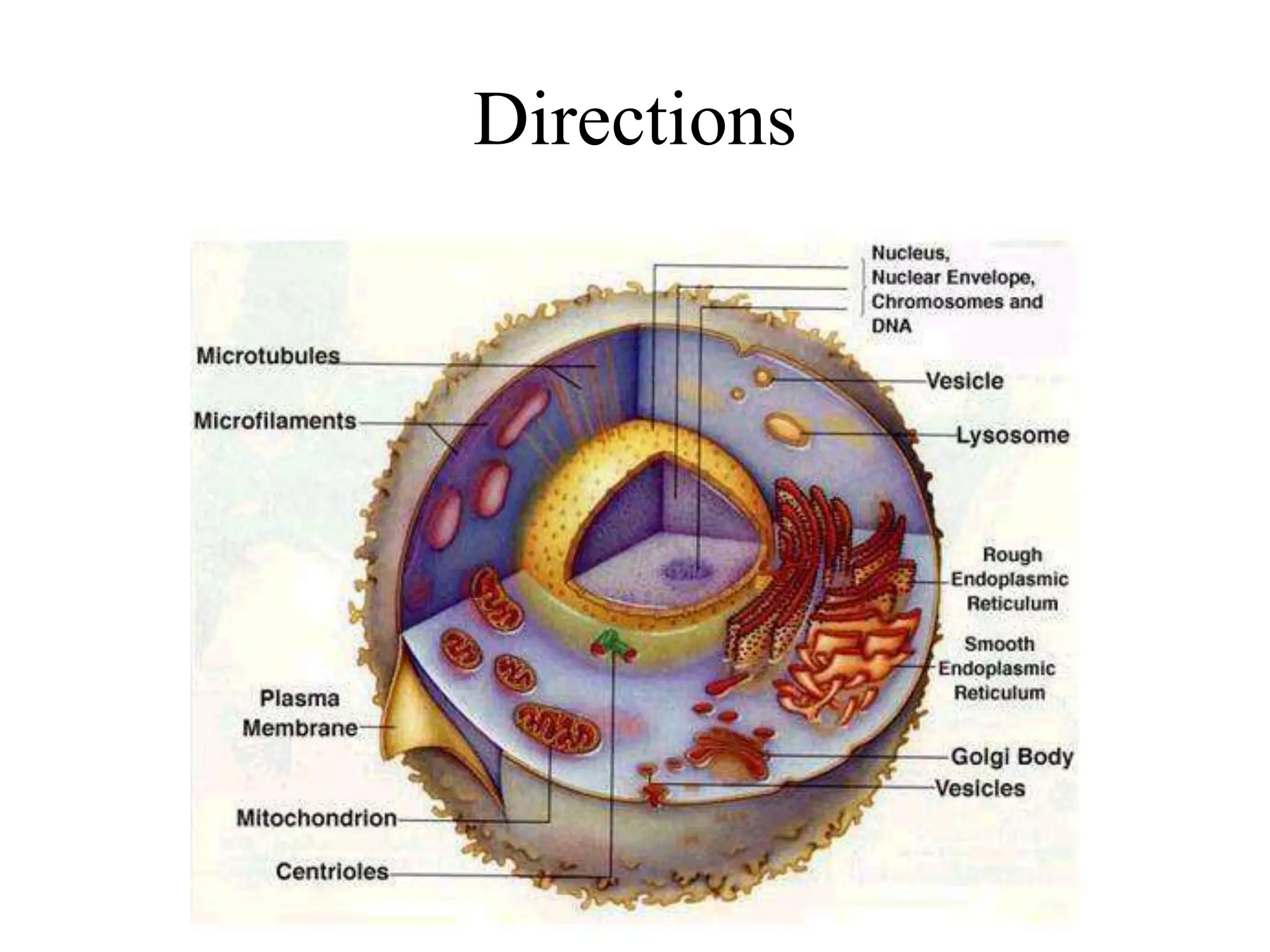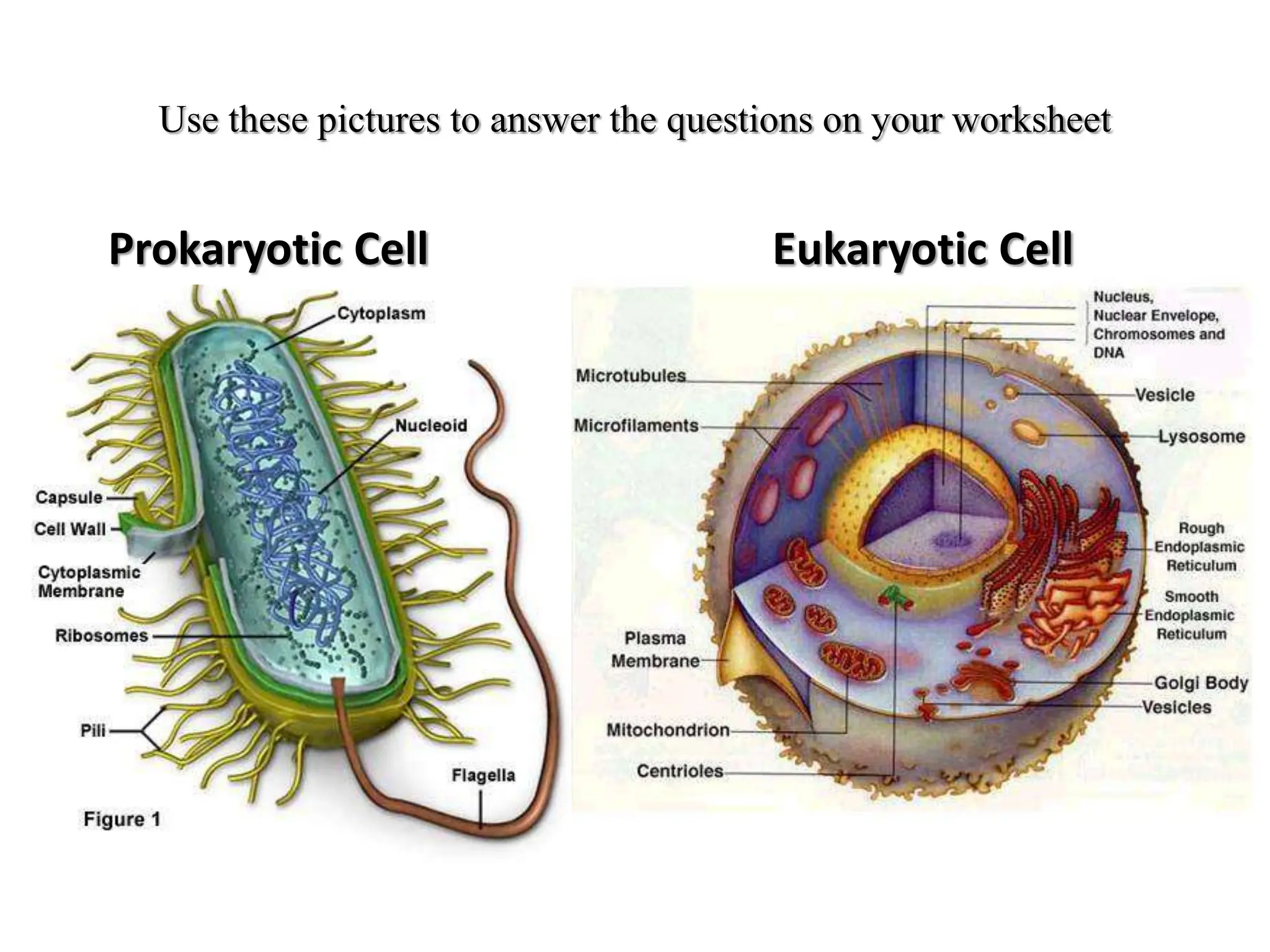The document discusses cells and their structures. It notes that the average human contains around 100 trillion cells and even more bacteria. All living things are composed of cells, with some made of single cells and others like humans made of trillions of cells. There are two main types of cells - prokaryotes and eukaryotes. While they both have DNA and cell membranes, prokaryotes are smaller and lack membrane-bound organelles, while eukaryotes have larger sizes and structures like the nucleus enclosed in membranes. Students then make models of prokaryotic cells and compare them to images of eukaryotic cells.

